Experience, lots of it, has taught me time and time again that much of learning math skills and concepts in the early formative years is going to be learned through manipulatives, not workbooks.
Granted, there may be children who already understand the connection between the symbol for a digit, and its real physical significance, but that conceptualization is actually realized in a child’s later stage of development. First comes the concrete followed by the abstract.
Dr. Ruth Beechick, in her delightfully erudite book, An Easy Start in Arithmetic, delineates the three modes of mathematical thinking into the following:
1) manipulative (outside the head)
2) mental image (inside the head)
3) abstract (inside the head)

Play is Essential
It is well worth keeping this in mind all during the formative years, i.e., kindergarten through third grade. Remember that giving your child the opportunity to “play with things” readies their imagination, training it bit by bit, as preparation for higher thinking.
All too often, workbooks jump ahead and ask the children to learn concepts in a backwards order, asking them for the abstract before they have internalized the concrete through the use of the manipulative mode of learning. Workbooks and worksheets often skip the mental image mode altogether.
Fight the temptation to do what may be just the current trend in math. Without a doubt you will see long term benefits and joy in your child when you pay attention to HOW they learn at each stage of development. When you help them to learn using a natural progression, you are providing them with what is essential, even if it is difficult to measure in academic circles.

How to Make Play Count
Practically speaking, this translates to “playing a game” with your child three times a week for just 15 to 20 minutes.
Some days you will see your child want to “play” math games by themselves, learning through the repetition of the skills you introduce in the games you play. Making the connections in repeated play is real learning, especially in these early formative years.
Remember this kind of natural learning will not produce a bunch of completed worksheets to show relatives or a concerned neighbor that your child is actually learning. Do not worry!
Instead, take pictures of your child “playing the games,” or keep a journal jotting down just a few sentences each day about what your child played with, and what skills they worked on.
It is about doing things that benefit and encourage learning, not just checking off tasks, especially ones that are not ordered correctly.

Life Provides Math Opportunities
Much of everyday life affords ample opportunity for our little ones to practice the concrete. A trip to the grocery store is a great way to begin. For instance, ask your child to pull three cans off the shelf for you and place it in your basket. Any dialog with numbers and counting, even before they can see the written symbol helps develop their mental images for numbers.
The same goes for colors and shapes, always using real items, and do plenty of this every day, in natural conversation. You can start a collection with your child, such as postage stamps, shells, rocks, or buttons. Store them in discarded shoe boxes. Involve the whole family by asking them to be on the lookout for the object you want to collect.
Once you have a good number of objects, say 20-30 of them pull out begin to sort them, by shape, color, or group them together by number, using the physical items, and verbal language to learn these concepts.
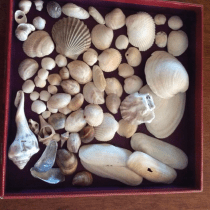
Use Language to Teach Math
Even verbal skills get practiced when you create a dialog about the items in the collection. Ask your child why they chose a particular item. For example, in a grouping of seashells, you may ask them to pick out all the white shells. When they do, ask them why they chose the ones they did. Don’t push too hard, let them play with the items for a while.
Our children are always learning by looking, touching, and exploring the things they come into contact with on a daily basis. You can even introduce concepts such as comparatives, such as the biggest one, the shortest one, the longest one or the smallest one. Every time you introduce a new concept discuss it with them and then let them play with the item to get well acquainted with it.
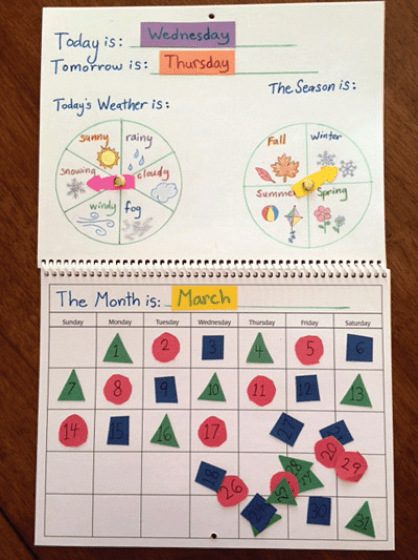
Make Your Own Math Calendar
Begin with a large calendar that you place low enough on the wall so that your child can easily move objects on it. Use shapes and/or colors for the numbers 1–31. Use three shapes and/or three colors of the numbers to make patterns that they can easily copy. Making patterns with colored shapes actually helps with skip counting later on, which in turn helps with multiplication.
Make certain that your BIG calendar shows days of the week by saying “Today is: ______” and “Tomorrow is: ______.” This provides the natural way to introduce the concept of sequencing. Work with the calendar on a daily basis asking questions such as “What is the last day of the month?”, “What day of the week is the 25th this month?”
You can even introduce the concept of left and right on this BIG calendar too. Ask them, “What day is left of Tuesday?” “What day is right of Wednesday?”
The BIG calendar is also great way to introduce a bit of natural science too by asking about your child each day about the weather outside. Add a weather wheel, with, snow, sun, rain, and clouds on it with an arrow for the child to point to on the wheel for the daily weather, using images for each forecast.
Save old calendars and play with them, making patterns and asking questions about the days and numbers. You can teach them ordinals too! Count with your child orally on the calendar, “The first day of the week is Sunday. The second day of the week is Monday, etc.”
The Importance of Patterns
Patterning is an important skill to learn. It is necessary for not only math but for language development, music and reading. Working with patterns is fun for these little ones. Make patterns with colored blocks, Legos, M&M’s, using at least three different colors and/or shapes. Have the child copy your patterns, then once they are comfortable doing so have them make their own patterns for you to copy.
Work with them, verbally asking why they did what they did. You can ask them to glue pieces of different colored construction paper to blank sheets also making patterns to copy. For example, make green triangles, red circles, or blue squares, having fun with a variety of patterns.
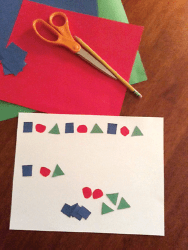

Making Connections
Learning does occur when you play games. Games that encourage them to match items to the symbol are great for the next level of learning. Have pictures with a number of objects glued onto an index card or on a paper cup. Then have the child count out Lego bricks, or lima beans or rocks whatever you have handy into the cup or on top of the index card. Ask them to count out loud for you.
Play this game several times and you will see that eventually they can count out the correct amount silently to themselves. We are trying to move from the physical object to pictures of the physical object before we move to their symbolic representation.
When they are really good at this then replace the pictures of the objects with the symbols of the numbers. Then introduce the new game to them, check them verbally. Let them play by themselves for a few days or weeks depending on the child and soon they will be internalizing the concepts. Once this connection is made easily and frequently then you can continue using the symbols for the numbers.
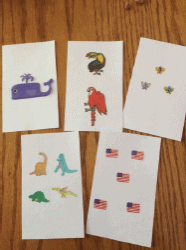
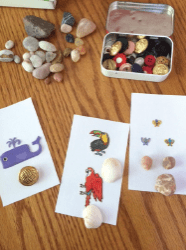
Top List of Manipulatives
There are plenty of manipulatives out on the market, but I recommend just a few, most of which can be found easily and inexpensively:
- Calendar: preferably a blank one to fill in with the month, date, daily weather and the season
- Any collections for patterning, sorting, simple graphing, teaching ordinals (1st – 4th)
- Pattern blocks and shaped blocks or puzzles, colorful ones
- Lacing cards, use ones that have colors and shapes
- Homemade or readymade Number flash cards 1–25
- Two sided counters…for addition and subtraction (1’s and zero)
- Big clock with moveable arms that show minutes and 5 minute increments (hour and ½ hour)
- Play money, mostly the coins: pennies, nickels and dimes (use for skip counting 1’s, 5’s, and 10’s too)
- Geoboards (great for making shapes, use colored rubber bands, great to practice letters too)
- Games or books that show the following concepts: longer versus shorter, larger versus smaller
- Abacus or counting frame
- Unifix cubes
- Lauri Puzzles, Shape and Color sorter, See the Difference Puzzle or any of their colorful foam puzzles
- Wipe and Clean Dot to Dot books (easy ones 1–25 only)
Once you have spent a great deal of time getting the mental image of numbers and the verbalization of numbers and counting, you will know that your child will be ready for the next step.

Best Math Storybooks
We really think kids love to learn with stories. It helps them to develop listening skills too! So using literature to introduce concepts is perfect. Here is a list of great Math picture books for this age:
- Today Is Monday by Eric Carle (Days)
- Mouse Count by Ellen Stoll Walsh (Numbers 1–10)
- 1 is One by Tasha Tudor (Counting)
- Mouse Paint by Ellen Stoll Walsh (Colors)
- Little Blue and Little Yellow by Leo Lionni (Colors)
- The Mixed-Up Chameleon by Eric Carle (Colors)
- My First Discovery Series – Colors
- Seven Blind Mice by Ed Young (Colors)
- Chicken Soup with Rice by Maurice Sendak (Months)
- Do You Want to Be My Friend? by Eric Carle (Part to Whole)
- Ten Black Dots by Donald Crew (great project to make their own pictures like the ones in the book)
Parent Resources:
The Three R’s by Ruth Beechick (includes the booklet, An Easy Start in Arithmetic)
Mathematics Their Way by Mary Baratta-Lorton (used for source material, this is an out-of-print book)
An Easy Start in Arithmetic by Dr. Ruth Beechick (before mentioned)

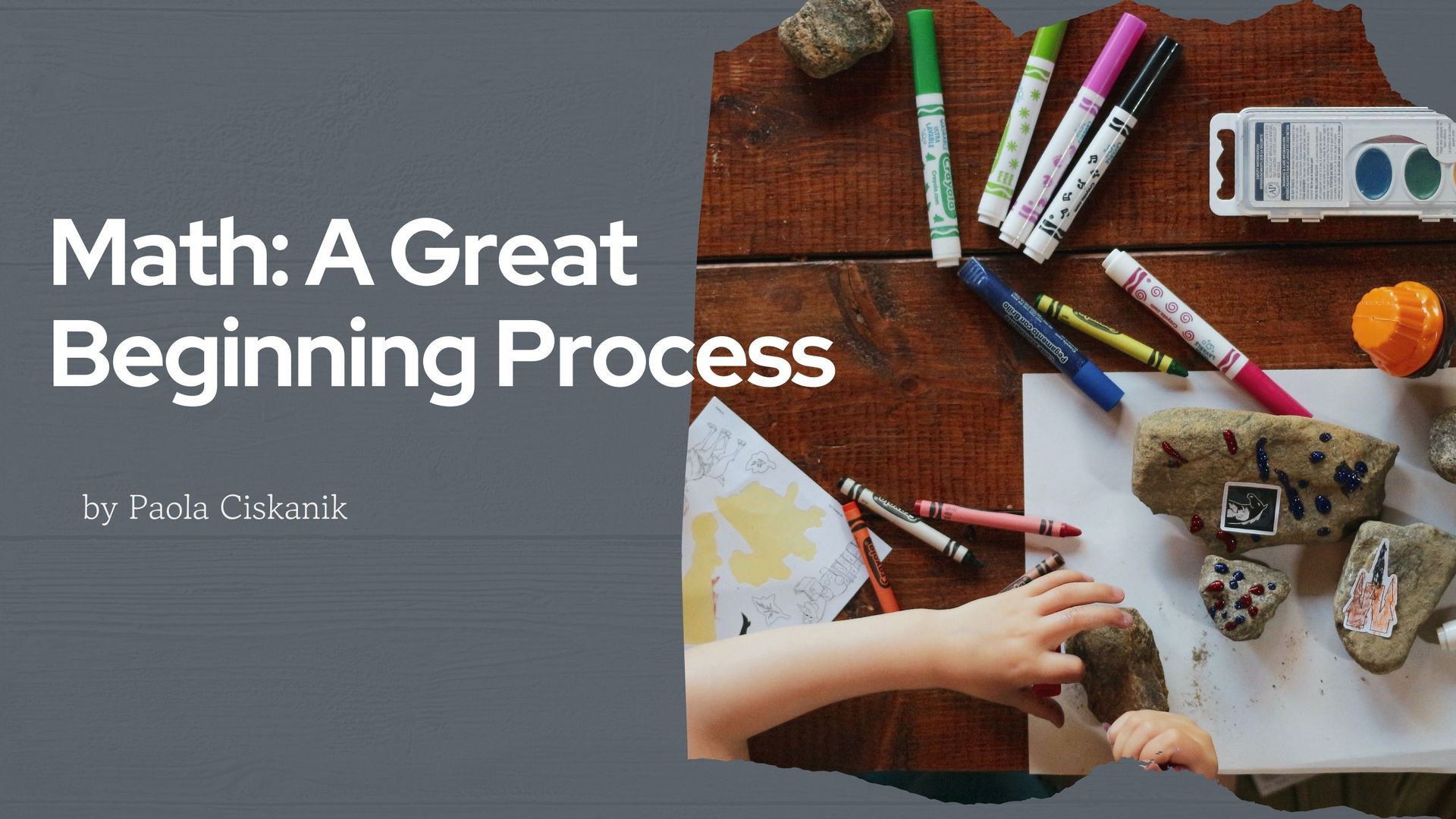
This is all right on! It matches perfectly with what I learned first as an elementary teacher who loved math and now as a homeschooling mom. It’s a great refresher as I start another one in academics!